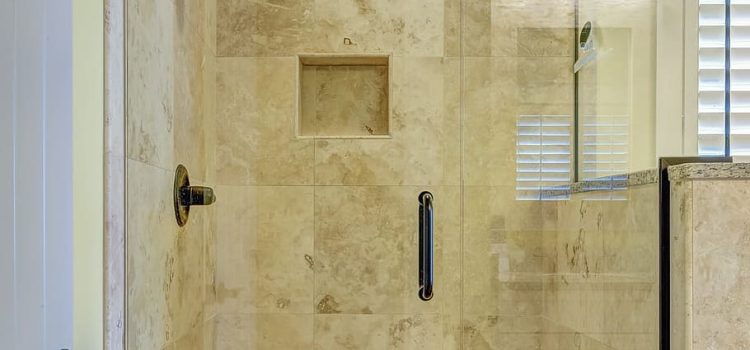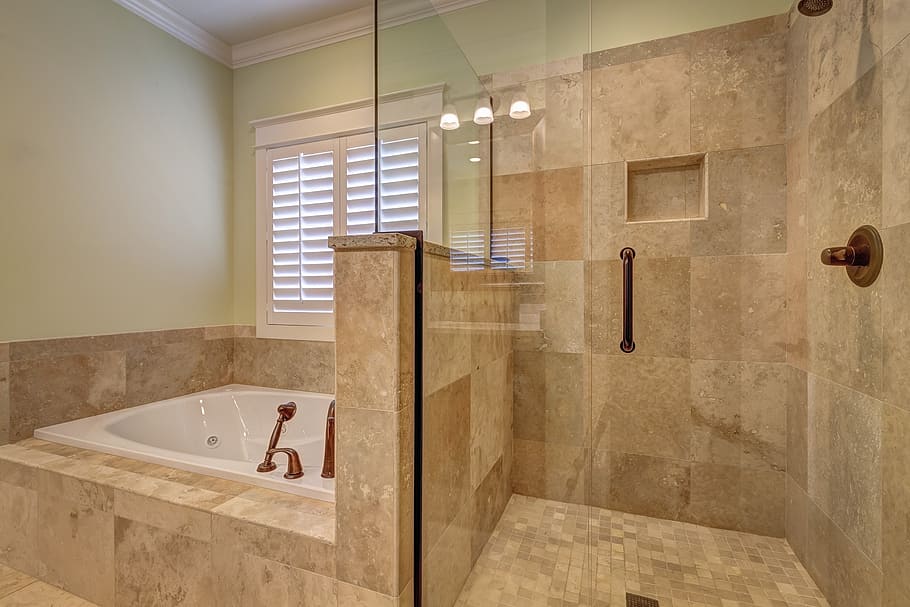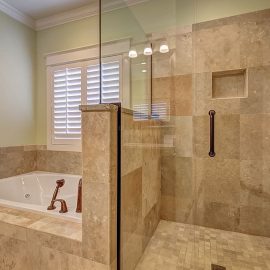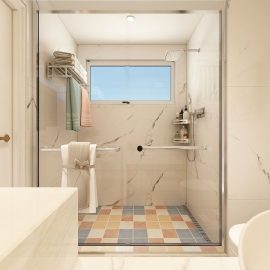
Why Choose a Tiled Shower Tray
Contents
– Why choose a tiled shower tray?
– How to choose a tiled shower tray?
– Tile shower tray: prices and points of sale
Tile shower trays can be installed or recessed and customized, as the name suggests, with tiles. It lends itself to all designs, sizes up to XXL, and configurations, even the most fanciful. So it’s up to you to make the right choice.
Why choose a tileable shower tray?
Features
A tileable shower tray is a sheet of polystyrene (one of the most commonly used industrial plastics) or polyurethane (another widely used plastic), often covered with waterproof glass fabric.
Choosing a tiled shower tray is, first and foremost, a choice of aesthetics. In the version embedded in the floor, it is the preferred tray for Italian-style showers.
Note: the trap can be placed in the center of the shower tray or off-center, depending on your needs and desires. Off-center, it takes the form of a narrow channel hidden under a long stainless steel bar.
Benefits
This type of shower tray is easy to install (this time, it’s more of a drop-in version) since it’s light and ready to be installed; most models include a drain slope, which is essential to prevent water from stagnating in the tray.
Practical, the tiling tray can also be recut to fit the shower’s size perfectly. It also guarantees a perfect seal, provided, of course, that the installation is carried out according to the trade rules.
Another good reason to choose a tiled shower tray is its resistance to crushing, impacts, and thermal shocks.
There are also shower trays, in standard or custom sizes, available in many materials (wood, natural stone, etc.).
How to choose a tiled shower tray?

Recessed or raised
The tiled shower tray is often recessed since it is the standard installation in a walk-in shower. This makes it easier to install, even if it does require some masonry work if only to dig the floor to make room for the connecting pipes. With no steps to climb, it allows level access to the shower, combining aesthetics with practicality for children and people with reduced mobility.
The tiled shower tray can also be laid down, making it even easier to install or raise. In the latter case, a side drain is possible without digging a trench. However, you will have to climb at least one step to the shower.
Shapes and sizes
The tiled shower tray is available in various standard sizes; the tiled shower tray allows for fantasies since you can easily recut it.
Its shapes are the same as for other trays: square, rectangular for long bathrooms, quarter round to fit in a corner, or pentagonal for narrow rooms.
Lining
The last step in installing your shower tray is the choice of tile, which depends on your taste and budget.
While darker tile colors are trendy, they are also more challenging to maintain because they leave traces of soap or limestone.
You can choose the tile to match the shower walls or the entire bathroom. However, it is best to choose a non-slip tile to reduce the risk of slipping.
Note: The German standard DIN 51097 classifies the level of adhesion of barefoot tiles from A to C. It Stands for medium grip, ideal for the bathroom floor, for example, B for high grip, perfect for the shower.
Prices and points of sale for tiling trays
You can find a tiling tray in DIY stores, specialist shops, and the Internet.
Its price depends on its dimensions, its specificities, and the manufacturer. Count from $150 to more than $600, excluding installation.



Pingback:5 Basic Plumbing Tools Every Home Owners Should Have - Plumbers services
Pingback:How to Choose the Right Shower Materials - Plumbers services